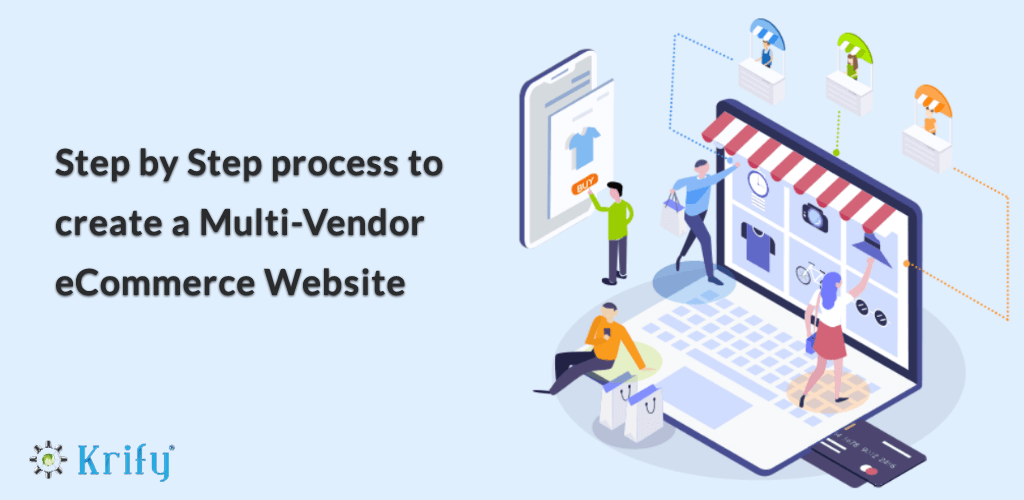Are you intrigued by the concept of a multi-vendor eCommerce website? In today’s digital landscape, eCommerce, particularly multi-vendor platforms, has become increasingly prevalent. If you’re considering embarking on the journey of creating your own multi-vendor eCommerce site, you’ll need a comprehensive step-by-step guide to navigate the development process effectively. This guide is essential for ensuring every aspect of creating a Multi-vendor eCommerce website is meticulously addressed, from design to functionality. So, let’s explore the essential steps in our Step-by-Step Guide to Creating a Multi-Vendor eCommerce Site.
How to Develop a Multi-vendor e-commerce Website:
-
Determine your Niche:
Initially, you need to find the particular vocation and aware everyone about your marketplace. Check the type of services or the products, your target market, and its location. Ultimately, you will see your marketplace scale-up great heights. Research and understand the market and shift to online selling more effectively.
-
Identify your competitor’s mistakes:
It is important to identify your competitor’s mistake, fill those gaps in your development, provide a unique selling point with some best features, and showcase those features in your promotional ads.
-
Find Vendors:
To get the inventory, it is must search the vendor, list their products in the website for selling. If there isn’t any tie-up with the vendors, the whole idea of website development is of no use. Before you figure out how to draw in sellers, you may need to put resources into your stock or rundown items accessible in different locales to begin attracting the audience or customers.
-
Focus on supply, customers, and vendors:
The development of the website might take time, so this time needs to be utilized in focussing on supply, customers, and vendors. Setting up brilliant customer and merchant experience, building the purchaser and seller networks, and offering magnificent customer care and seller help. Work nonstop, uphold, and support your best vendors, run unique proposals for most dynamic customers.
Features of a multi-vendor eCommerce Website:
In spite of the fact that each multi-seller commercial centre is special, there are standard highlights. We should audit them to assist you in beginning your rundown.
-
Dashboard for the seller:
Every vendor registered in your website needs a separate dashboard, where they can add, delete, view, and do more managing activities regarding their products and services. As every vendor is not technical in his field, it is important to focus on the user-friendly interface.
-
Inventory management:
Vendors should easily manage inventory to list products neatly, enabling smooth navigation for users to find desired items quickly. As a website owner, it is also important to understand and showcase its types, description, and images. The products need to be accessible and approved by the website owner before showcasing on the website.
-
Transaction:
When it comes to transactions, the flow of transactions starts from customers, collecting charges from the vendors and payout to the vendors based on the partnership agreement. But as a website owner, it is also important to understand that the vendors or seller’s fee is your source of income, so the fees charged upon the vendor should be appropriate and should not be like driving away from the vendors. On the off chance that subscription doesn’t work for your multi-vendor commercial center, you can charge membership expenses (fixed for all or dependent on participation) expenses per posting or charges for admittance to leads’ contact information. Optimize the entire process of overseeing transactions to minimize manual intervention from your end.
-
Order’s fulfilment:
It is better to provide access to the sellers or vendors to completely manage their shipping methods. As some vendors would prefer to provide the delivery service by courier or local pickup, others might opt to use shipping carrier companies. The integration of these features or facilities within your eCommerce website will scale up your vendor’s experience. Provide a notification feature to help the vendor and customer know about the product placed and its shipment details.
-
Search tools:
Users or customers prefer quick product searches, enabling them to swiftly navigate and proceed to payment with ease.
-
Rating and review:
The team must integrate this feature, enabling the owner to monitor ratings and reviews for products, vendors, and services. With customer feedback, decisions for enhancements can be made.
Conclusion:
The term development might sound short, but practically, it is a long process and requires more effort and time, upon multiple analysis, research, design, testing, etc.
We at Krify are renowned for developing sturdy mobile and web applications by our skilled developers, who are well versed in learning and implementing the latest technologies. If you are a business owner looking for a multi-vendor eCommerce website development company in India, you are on the right page. At Krify, we have hands-on experience in developing multi-vendor eCommerce websites. For more information, contact us.
Similar Blogs




